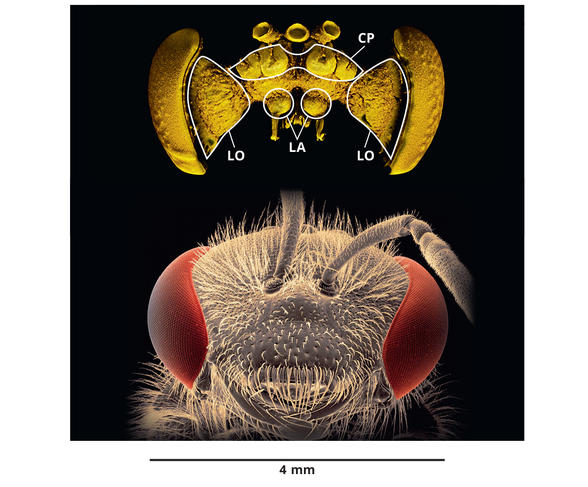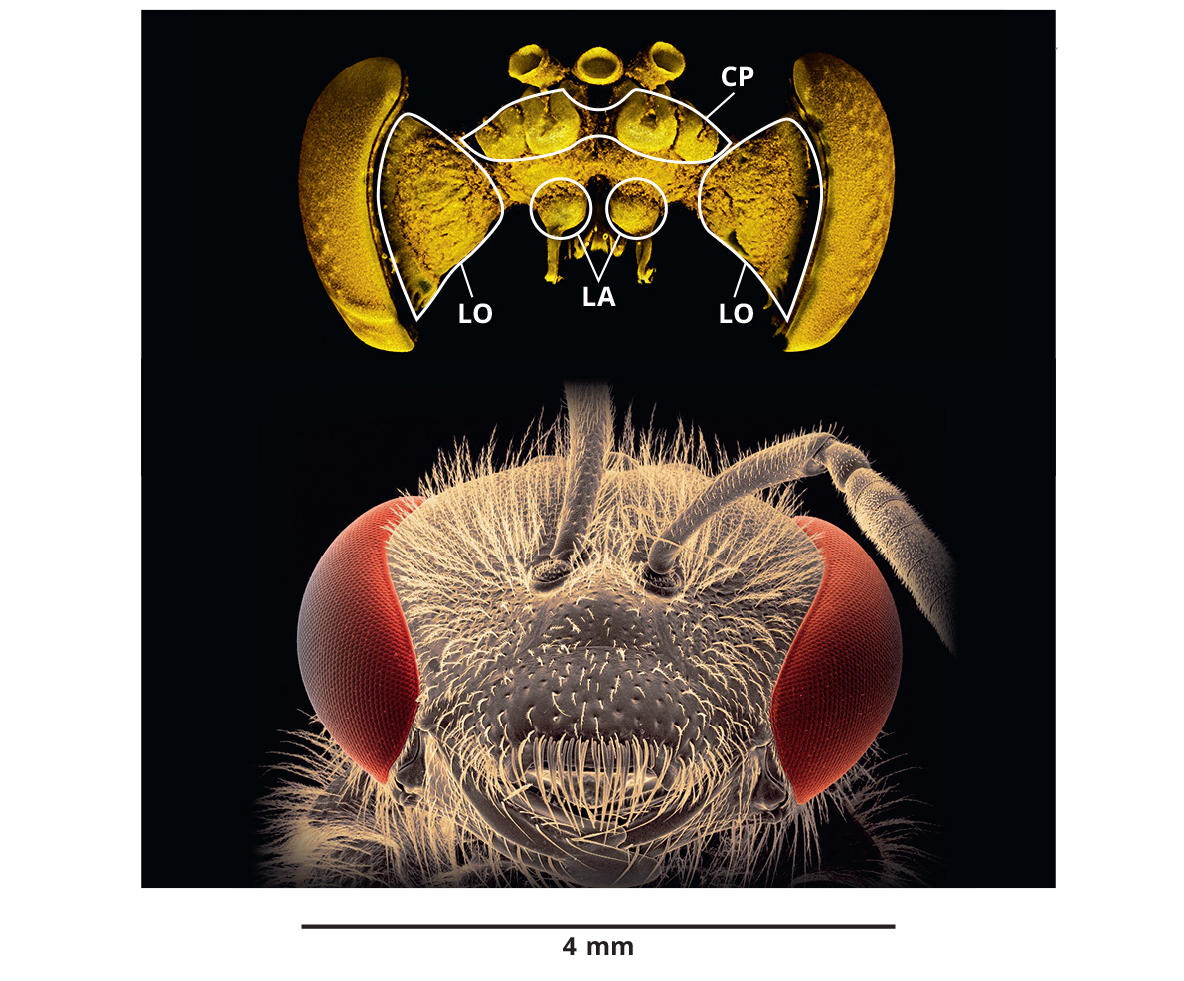You are here
Are Bees Also Victims of their Intelligence?
Since September 1, 2018, French farmers are no longer allowed to use neonicotinoids in their crops. This is good news not just for honey bees, including a wide diversity of wild and domesticated species, since these "bee killing" pesticides have been incriminated in the decades-long global crisis faced by these insects.
Despite this step in the right direction, the survival of bees is far from certain for two reasons. First, the new generations of pesticides that have replaced neonicotinoids in a number of countries appear to cause similar damage. Second, it has been scientifically established that what threatens bees is a combination of multiple stressors, not just a single one: pesticides, the increased rarity of wild flowers, certain pollutants, the emergence of new parasites and pathogens, the introduction of exotic predators, the destruction of habitats, etc.
But why exactly are bees in danger? And how can we help them? Close analysis of their behavior shows that their lifestyle requires a highly developed albeit fragile intelligence, which makes them vulnerable to environmental stressors. These different stressors act on the development and functioning of the brain, thereby altering the capacities of bees to solve the series of cognitive tasks essential to forage, and thus to their survival.

Small Brain, Great Feats
As they travel from flower to flower gathering pollen and nectar, bees contribute to the reproduction of the plants that produce the fruits and vegetables we consume. This long coevolution between plants and insects requires bees to acquire a detailed knowledge of their environment. Bees exploit ephemeral and fragmented resources that are sometimes dispersed hundreds of meters—and sometimes even kilometers—from their nest (or from the hive, in the case of honey bees). Unlike certain animal species that do not have a fixed nest, or that stock up on abundantly available local resources, bees depend for their survival on elaborate cognitive faculties that allow them to find flowering plants near their nests, and bring back this food to the colony. These capacities are all the more impressive given the small size of their brain (a pin head of a million neurons as compared to 100 billion for humans!).
To forage effectively, bees must firstly be capable of acquiring both visual knowledge of their environment and spatial memory to orient themselves and find their nest. They must then learn and memorize the form, color, smell, texture, and even the electromagnetic signature of nectar-producing flowers. More intriguing still, these insects are capable of developing routes that connect food sites with the nest, notably by taking the shortest trip. Finally, there is the famous dance honey bees use to communicate the quality and location of floral resources to their congeners. All of these abilities are underpinned by neuronal processes that are as developed as they are fragile, and whose proper functioning enables social bee foragers to complete their mission and ensure the colony's survival, or in the case of solitary species, that of their offspring.



When the Environment Attacks Neurons
Different factors implicated in the decline of bees were recently singled out for their direct effects on the brains and behavior of bees, including parasites such as the Varroa mite or the Nosema fungus, which modify the expression of certain genes in their brains. Pesticides and heavy metals (from industrial pollution) affect communication between the neurons, as well as their level of activity. Given that the brain can function effectively only if a certain level of activity is maintained, the connection between these cellular effects and a disruption in foraging behaviour is inevitable. Bees can also suffer from food deficiency when they inhabit environments with diminished floral diversity, as in large areas of single-crop farming. The brain of a bee larva that has experienced deficiency does not develop in optimal fashion, which reduces its foraging efficiency later on. For adults, a shortfall in essential fatty acids (such as omega-3) impedes the olfactory learning essential to discriminate different plant species. This effect can, by chain reaction, cause a lack of food for the entire colony, and potentially even its collapse.
What can be done to protect our pollinators?
By assembling irrefutable proof of their toxicity, public research has contributed to the exclusion of neonicotinoids from the market, 25 years after the initial alert was sounded by beekeepers. Our duty as specialists of insect behavior is to identify other sources of stress, along with their combined effects on the brain and cognition of various bee species, in other words the wild bees that are indispensable to the pollination of local plants. A comparative approach is necessary to identify the species that are the most exposed and sensitive to stress factors. Such studies should define the levels of tolerance for combinations of stressors, as well as identify strategies for protection: the use of food supplements, or clearly identified combinations of flowers to ensure balanced nutrition, for instance.
What can be done right away? As a central element in farming ecosystems, bees are essential to us humans. A profitable form of farming that is more respectful toward pollinators should be put in place, with alternative approaches to intensive farming practices recommended according to scientific data, which is provided in France by the French National Institute for Agricultural Research (INRA). It is also as citizens that we can change things, for example by increasing the food supply with more honey-producing flowers on our balconies and in our gardens, and by favoring moderate consumption that is local and environmentally friendly. The positive response on the part of European governance bodies to initiatives from civil society for greater regulation of neonicotinoids shows that considerable citizen mobilization based on compelling scientific arguments can indeed yield results.
The analysis, views and opinions expressed in this section are those of the authors and do not necessarily reflect the position or policies of the CNRS.






